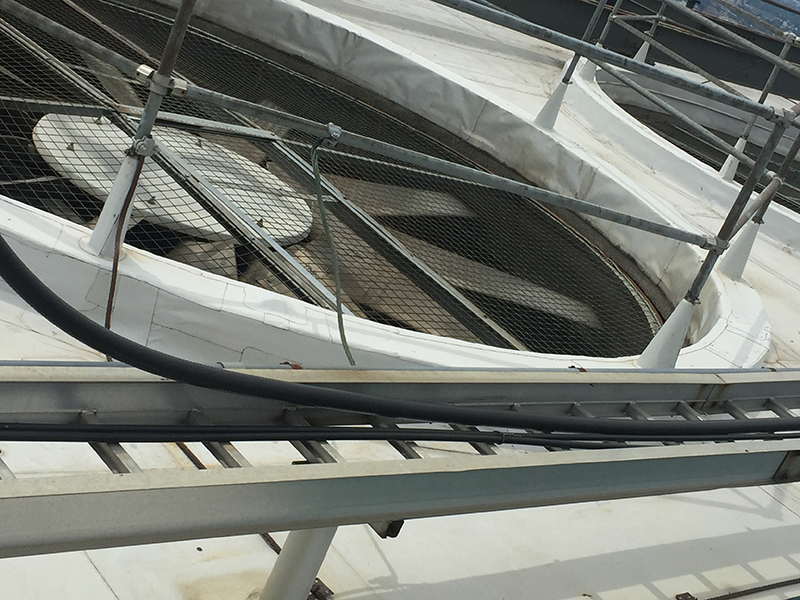By Terry Vergon
Director, Engineering and Maintenance
 Once upon a time, facilities professionals kept on top of physical assets by making rounds and taking readings. Today, we have systems that continuously monitor equipment and spaces, and foretell issues. Technologies range simple sensors that can provide data on flow, temperature, and vibration, to more sophisticated sensors that can “see” changes in multiple spectrums, “hear” sounds beyond human capability, and even “smell” for parts per billion of chemicals.
Once upon a time, facilities professionals kept on top of physical assets by making rounds and taking readings. Today, we have systems that continuously monitor equipment and spaces, and foretell issues. Technologies range simple sensors that can provide data on flow, temperature, and vibration, to more sophisticated sensors that can “see” changes in multiple spectrums, “hear” sounds beyond human capability, and even “smell” for parts per billion of chemicals.
These new technologies are a boon to efficiency, but there may not be enough engineers on the planet to analyze the sea of data that is their output. Imagine a facility with 400+ sensors (everything from trash can sensors in bathrooms, to filter differential pressure sensors in the HVAC system and fan motor vibration sensors), all sending information every minute or so to an aggregated database. In short order, the database would contain several gigabits of information to analyze. How do you turn so much data into actionable information?
One option is an “engineer in a box” or EIB solution, which uses artificial intelligence and learning machine language to help navigate the ever-growing data flow. For example, sensors and an EIB system can alert the team to a trash can nearing capacity so we can dispatch a person before trash spills out on to the floor. And it’s not just about convenience “predictive abilities in vibration analysis can indicate a bearing on a rotating piece of equipment needs lubrication, before it fails, spurring a costly repair and possible downtime.
But even this solution can have its issues. First, just like a person, EIB programming must learn to parse valuable information from the mass of data. As an example, the program needs to understand the difference between a vibration profile for a fan that is starting to fail, and that of a train passing by the facility.
And like people, EIB systems are not all the same. Many systems have limited learning capabilities. They all take time to learn the processes they are monitoring, and they all have various types of outputs/abilities to communicate. When considering EIB solutions, take into account the logic and learning programming that drives them, and potential limitations in memory capacity, inputs, and even bandwidth.
At a large research and technology site with several large pieces of rotational equipment, C&W Services is responsible for engineering and maintenance. Until recently, monitoring for bearing wear, balance issues and other vibration related anomalies was accomplished through monthly readings from wired transducers and send the waveform to a third part for analysis. The process was time consuming, and there was no guarantee that even regularly scheduled readings would coincide with the problems they were designed to uncover.
Understanding the potential of rapidly evolving capabilities in wireless monitoring and data collection, C&W Services worked with our client to design a pilot program to determine the efficacy and ROI of a more technologically enabled monitoring system.
In reviewing potential solutions, we found capabilities ranging from a conversion box that periodically transmits the wired transducer readings, to “anomaly detecting” transducers that automatically send waveform samples for suspected events. The market is still very new, developments are rapid, and capabilities wide-ranging.
We viewed the pilot as an opportunity to develop a more complete and long-term solution beyond transducer technology. The pilot became an effort to investigate a complete system solution that included the leverage of more data, advanced analytics and predictive technologies.
We found a solution with the potential to investigate and test new analytical ability beyond the wireless technology features. Advanced machine learning capability, predictive and condition based monitoring, and remote diagnostic ability were central to the pilot.
The installation was simple enough. Wireless, WiFi enabled sensors called motes were placed in the key locations of the electric motors and the mandrels. Since the motes are tri-axial sensors, one mote can be placed strategically to monitor X, Y and axial vibrations. A typical Air Handling Unit or Pump system would have a four motes; one on each end of the motor, the drive end of the pump or fan and the open shaft end of the pump or fan. This configuration affords ability to interrogate the vibration data from each of the load carrying bearings. The motes are programmed into a dashboard that indicates its related equipment, location and orientation. At this point, waveform data can be configured to be transmitted at desired intervals.
The dashboard is configured to monitor an entire system. The previous installation example would be identified as a pump or fan assembly and all four motes would be configured to represent the equipment data collection and analytics. Analytics include the basic waveform capture, level limit alarms and alert notification. While this is a relatively common solution, our piloted product also has a unique machine learning module intended to separate them from the competition.
The pilot product’s machine learning uses multiple samples to assign various pater behaviors. Additionally machine based learning looks at multiple waveform variations of “good” and “bad” to identify when a new waveform anomaly warrants further investigation or an alarm condition. The typical example is that a machine based learning system will consider multiple input parameters to develop a net health score.
The pilot confirmed several positive outcomes:
- Wireless sensors can replace manual data collection.
- Wireless sensors enable more frequent data collections, and data collection can be requested at will for investigation.
- Depending on data collection frequency, the vibration data detects equipment use cycles.
- A common dashboard enables more robust waveform and data analysis. Additional samples are available at will vs. waiting or scheduling special visits.
- Analytics enable semi-continuous monitoring. Alarms are noted and service can be requested within minutes of a vibration anomaly.
- Client confidence improves with a demonstrated monitoring solution.
Like all aspects of the Internet of Things, EIBs can be both exciting and challenging. Our world is becoming filled with devices that want and need our attention. As an industry, facilities services must continually improve its integration of automated analysis and learning systems into our way of doing business. However, with innovative solutions and their thoughtful implementation, we can help our clients navigate the growing sea of data toward a more informed and efficient outcome.





